What’s the best dinghy anchor? To determine the best dinghy anchor we tested three variations: the folding grapnel anchor, the claw and the Mantus anchor (deemed ‘the best dinghy anchor’).
Allow me show you a picture of each anchor, explain why a sailboat owner would need an anchor for their dinghy, and the results of our anchor tests in dry sand (to show how the anchors worked), wet sand and while in a dinghy anchoring in mud. Towards the end if this blog post you’ll find a video demonstrating our best dinghy anchor tests 😉
The Folding Grapnel Anchor
The Claw Anchor
The Mantus Anchor
Choosing the best dinghy anchor depends on the type of seabed that you’re going to anchor in – whether it’s sand, mud, grass, rock or a mixture. In actuality, not one anchor can handle all situations. Overall, however, the ultimate aim is to keep your dinghy anchor from dragging and potentially losing your dinghy to Poseidon!
But why do sailing cruisers need an anchor for their dinghy?
You might speculate, as I did, that dinghy’s will presumably be dragged up on the beach and/or tied onto a dinghy dock. It’s not a common scene to see an area where dinghies are actually anchored.
However, there are definite times a dinghy owner will need to use the anchor!
While sailing throughout the Caribbean, we usually tied our dinghy to a dinghy dock (rather than pulling it ashore). In addition, we also threw an anchor off the back of the dinghy, getting it to grab and pulling it tight. We did this to prevent the dinghy from smashing into the dock with oncoming waves. Or worse, it was known to happen that dinghies would get stuck under a dock and get jammed with the rising tide!
When Simon and I anchored in Mustique, a private island in the Caribbean, we successfully used the dinghy dock on several occasions. On one dockage, however, we weren’t so successful!
We returned to our dinghy and the starboard inner tube had popped.
Simon and I clambered onto the floating side, motored back to our boat as fast as possible and then hoisted our outboard up before we lost it! Our dinghy was popped by an exposed nail. With the waves bashing the boat against the dock, it was inevitable that a puncture would result. On that occasion we did not use an anchor! You live and learn – eh?
Aside from helping to keep your dinghy away from the punishment of the waves, dinghy anchors can also be used when you can’t pull the boat ashore or tie it to a dock.
When we anchored in a northern bay off the island of Sardinia, west of Italy, we found ourselves unable to beach our dingy and the private dock refused us use. We were with friends and in total had three children and five adults in addition to picnic boxes, water toys, towels and beach matts. Fortunately the owners of the dock let us unload the children, some adults and all our ‘stuff’.
My friends husband and Simon then took the dinghies to a safe area and anchored them in the sand. It wasn’t ideal and those kind of situations didn’t happen often, but they do happen.
Furthermore, when we were in Grand Turks, an island in Turks and Caicos (Caribbean), we wanted to beach our dinghy however the beach was so long there was nothing to tie it to! Eventually we noticed other dinghies that were anchored and simply followed suit.
And what about going out fishing?!
If you want to get to a location where your sailboat won’t take you, you can take your dinghy, throw an anchor off the bow and put your pole in.
So…what is the best dinghy anchor?
Well, if you’re going to anchor in sand or mud, you’ll want something that is pointy, digs in quickly and has enough area to hold rather than pull up the mud and drag.
If you’re going to anchor in rocks, you’ll want something what spreads out and almost wedges itself behind a rock or rocks.
Ideally, it’s worth having a couple anchors if you’ll find yourself in a variety of seabed conditions.
For the past three years we used a folding grapnel anchor.
It folds up, is easy to store and doesn’t weigh more than 4lbs. For the most part, however, it’s a terrible anchor. From time to time it might work in rocks but almost always Simon had to dive down, strategically position the anchor and then push it into the seabed and/or wedge it behind a rock.
On our previous sailboat, we had a claw anchor and that performed well.
But just last week Simon purchased what is being hailed as the best dinghy anchor ever – the Mantus Anchor.
We wanted to test our new anchor and let you see our findings. To get an idea of how the three anchors dragged along the seabed and eventually dug in, Simon, Sienna and I tested the anchors on the dry sand (just to see how they moved), on wet sand (more realistic to actual anchoring situations) and finally we took the anchors out into the Charleston harbor and anchored them in mud.
When we anchored the anchors in the mud, we let out the exact same scoop for every anchor. So, we were in 7’ of water and therefore let out around 30’ of line. For each anchor, we let the tide pull us back until the rope became tight. Simon then put the dinghy into reverse on ‘tick-over’. We then put the dinghy in reverse under substantial revs.
The results of our best dinghy anchor test?!
In last place came the grapnel anchor. It didn’t dig in and dragged no matter what we did to try and get it to bite.
In second place came the claw anchor. This anchor dug in and held the dinghy when we put it in reverse just ticking over. However, when we increased the revs, the anchor pulled put and we dragged with out biting back down. When Simon pulled up the anchor it was caked with mud and therefore would have no chance of digging back in.
In first place was the Mantus anchor. During our dry and wet sand trials we noted that the Mantus anchor digs in almost instantly with the sharp point and the stronger the pull, the more the anchor bites down.
The Mantus anchor not only dug in upon reverse in tick over, this lightweight nicely designed anchor kept us from moving with increased revs. We were not going to move! (Watch video below and then carry on for more information about pricing…)
The Best Dinghy Anchor Video | Sailing Britican
What about pricing?!
Well, as you would expect, the Mantus comes in at a higher price. However, it comes with a high quality bag, an anchor shield (fits over the pointy end), and 50’ of rope.
As far as the grapnel and claw go they are less expensive however are sold without the protector, bag and rope.
My husbands verdict is that we’ll keep our folding grapnel as it doesn’t take up much space anyway. Whenever we need to anchor in rocks it might come in hand. Overall, however, we’re extremely pleased with the Mantus anchor. We look forward to testing out waters in the Caribbean, Pacific and wherever else we sail to 😉
And lets remember that in order to anchor a dinghy you first need to have a dinghy!
So…now you know what the best dinghy anchor is. Get yourself a Mantus Anchor today 🙂
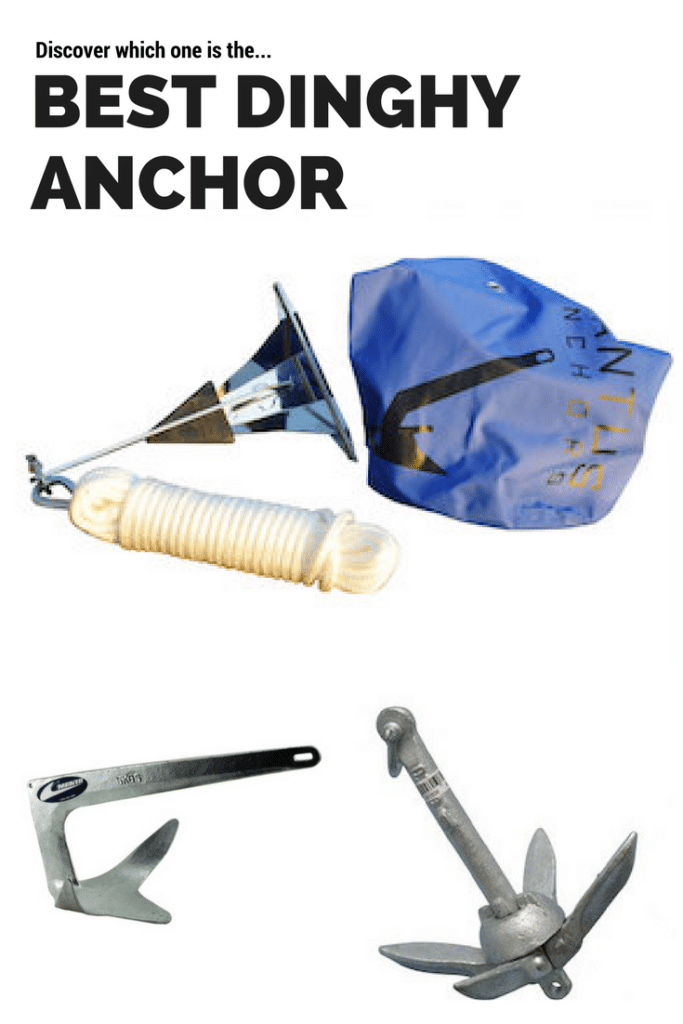
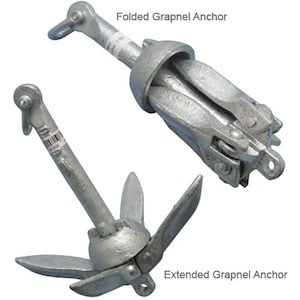
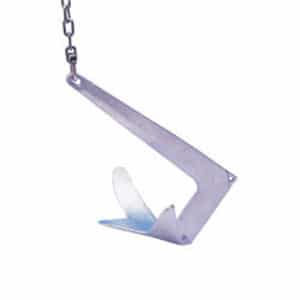
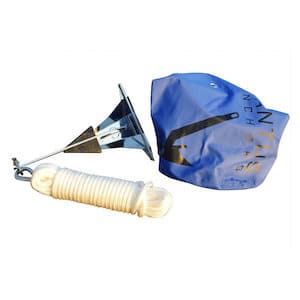
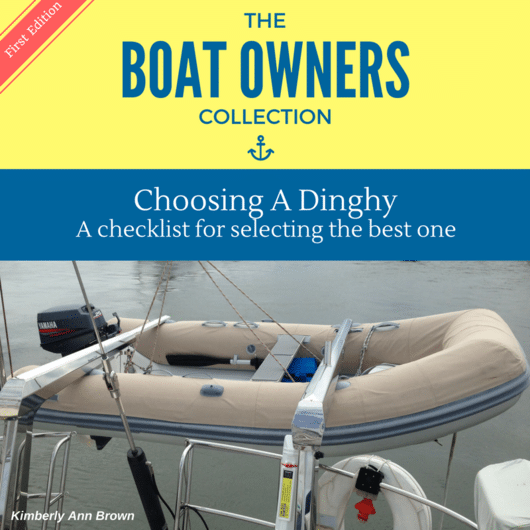
Did you tried the Fortresse anchor? It’s light and works pretty well in sand and mud.
Great little post! We don’t have a dinghy anchor yet so this is timely!
Curious as to why you don’t use chain between your anchor and rope to assist the anchor to set itself?
At the time of doing this video we didn’t think of using a chain. In the future we did use a small length of chain as it helps keep the anchor arm lower to the ground. It’s a great question. Smiles, Kim